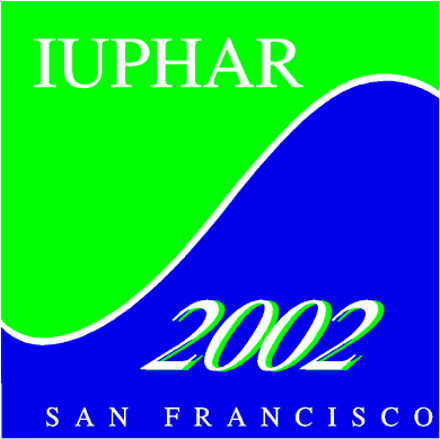Sites of interest on the World Wide Web
—edited by Rick Neubig
IUPHAR 2002
Every four years, the International Union of Pharmacology (IUPHAR) (http://www.iuphar.org/) sponsors the World Congress of Pharmacology meeting. This year, ASPET is hosting the meeting in San Francisco, on 7–12 July 2002. Details can be found on the meeting Web site (http://www.iuphar2002.org). The meeting will include pharmacologically based research ranging from molecular mechanisms of drug action, biodiversity and natural products, treatment of malaria, pharmacology of addiction, to education technology. Symposia and plenary lectures also cover the contributions of animal models (from gene knockouts to transgenic rats), and cellular and molecular approaches to understanding drugs.
RNA Drugs
Is it hype or is it real? The buzz about oligonucleotide-based therapeutics has been around for a long time, but only one such therapy is in clinical use—fomivirsen (VitrageneTM) for treatment of cytomegalovirus (CMV) retinitis (http://www.fomivirsen.com). The potential to harness the specificity of nucleic acid recognition to inhibit or repair genes is still great, but the technical hurdles remain substantial. Both the versatility of oligonucleotides as well as the difficulties in delivering oligonucleotide drugs contribute to the dizzying proliferation of therapeutic approaches (e.g., antisense, ribozyme, aptamers). The new kid on the oligonucleotide block, RNA interference (RNAi), is described in this issue by Tuschl and Borkhardt. It has already proved to be a powerful experimental approach for turning off gene expression, and the authors explore its potential in therapeutics.
To help the newcomer understand some of these new RNA therapeutics, John Kimball’s Biology Pages provide a brief primer to the world of antisense and RNAi, (http://www.ultranet.com/~jkimball/BiologyPages/A/AntisenseRNA.html). Ribozymes are also being developed for therapeutic applications and some clinical trials have begun, especially in hepatitis and cancer. A description of how ribozymes work (http://www.rpi.com/tech.cfm) and a useful bibliography of ribozyme publications (http://www.rpi.com/ribzbib.cfm) can be found on the Web site of Ribozyme Pharmaceuticals Inc., a company specializing in their development.
Previous examples have focused on the use of small RNA molecules to disrupt the expression of deleterious genes. An exciting use of large RNA molecules, presumably delivered through methods of gene therapy, is in the repair of RNA, expressed from mutated genes, by splicing in normal or therapeutically useful exons (http://www.intronn.com/home.htm). Evolutionary molecular biologists have even suggested that life began as an RNA World (http://www.nobel.se/chemistry/articles/altman/). This concept is also the title of a general Web site devoted to RNA studies (http://www.imb-jena.de/RNA.html). Perhaps pharmacologists will be finding themselves in an RNA (or at least a nucleotide) world in the future. The Web can help us prepare for it.
New Collaborations
Other review articles in this issue deal with subtypes of enzymes involved in second messenger pathways (Sunahara and Taussig) and with changes in neural structure and function underlying mammalian behavior (Wolf). Although these two topics appear quite dissimilar, major efforts in biology are bringing together the detailed study of molecular processes to elaborate an understanding of complex biological processes. The National Institute of General Medical Sciences (NIGMS) has recognized that connecting these two biological realms may not happen without novel approaches to the funding of research. The new program of “Glue Grants” from the NIGMS (http://www.nigms.nih.gov/funding/gluegrants.html) attempts to connect researchers in large-scale collaborative efforts to bring detailed molecular information to bear in the analysis of complex biological systems. The first of these Glue Grants has supported the Alliance for Cellular Signaling (AFCS) (http://www.afcs.org), centered in the Pharmacology Department at University of Texas, Southwestern. A key feature of the AFCS program and its Web site is a compilation of the many subtypes of signaling molecules. You can search for your favorite molecule at http://www.afcs.org/molecule_pages/Seeker.cgi. Furthermore, the Alliance is working to apply high-throughput biological methods “to understand as completely as possible the relationships between sets of inputs and outputs in signaling cells that vary both temporally and spatially.” Evidence that this is a new approach comes from the fact that the Alliance is placing data from these studies on the Web site rapidly without waiting for peer review and publication.
- © American Society for Pharmacology and Experimental Theraputics 2002






